
In the Kimberley region of Western Australia there are both the Red-browed Pardalote and the Striated Pardalote. They are often heard with their continuous call and when they are hiding in dense trees it can be hard to find them. The Red-browed Pardalote has a five note call, whilst the Striated Pardalote has a sharp two note call, but both species sound extremely persistent when you hear them. They are only small birds of about 10cm/4 inches and the Striated Pardalote actually looks like it has a red brow, so don’t be tricked! The feature photograph is a Striated Pardalote!
On one of our recent birding and camping trips we happened to choose a camp site in the bush that had been a gravel pit in the past. Every suitable quarry wall was being used for nesting and the two species of Pardalote were actually nesting close to each other. On our first visit the Striated Pardalotes had already built their nest and were sitting on eggs and they were trying to keep the Red-browed Pardalotes away. On a subsequent visit a few weeks later we discovered that the Red-browed Pardalotes had succeeded in nesting in the same quarry wall. The Striated Pardalotes were nesting on the left and the Red-browed Pardalotes were nesting on the right.
Pardalote nesting area
The Striated Pardalotes had clearly attempted to build their nest just below where it finally was constructed and the sand must not have been conducive to nest building just below the final placement. The tracks into the nest were visible and the nest went down into the sand wall.
Striated Pardalote nest
The Red-browed Pardalotes had removed a lot of sand to make their nest and there was a small stick that appeared to have been placed at the entrance by the birds. Once again the tracks they had made in were clearly visible.
Red-browed Pardalote nest with stick at entrance
There was a lot of movement in and out of the nest and I did attempt to take a photograph of one of the birds leaving…not entirely successful as you can see…almost made it out of the bottom of the photograph!
Red-browed Pardalote leaving nest
The Red-browed Pardalotes were most active in the very early hours, which is not ideal for photography but I will share some of the photographs that I took and you will see how small these birds are. It is quite a feat to think they can dig these nests and it would be interesting to watch how they initially start these nests. There must be a lot of hovering to initially start the hole and then kick out all of the sand. Had there been a hollow in a tree that was suitable they would not have been doing all this digging, but this whole area was being used by nesting Pardalotes. We saw these familiar holes even in the sides of gravel roads and beside the track in Geikie Gorge.
Red-browed Pardalote in the early light
Hardly a day went by when you didn’t hear these birds calling during July and August and hopefully they all bred successfully. If you come across holes in the side of tracks, quarry walls and the like in the north of Australia you have most likely found a nest site and it may well be Pardalotes or Rainbow Bee-Eaters.

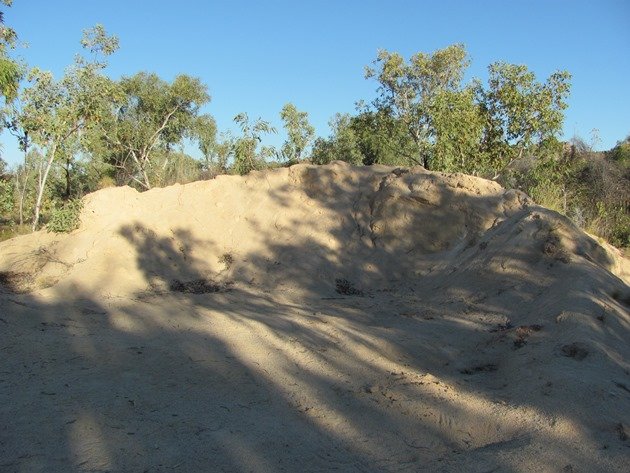
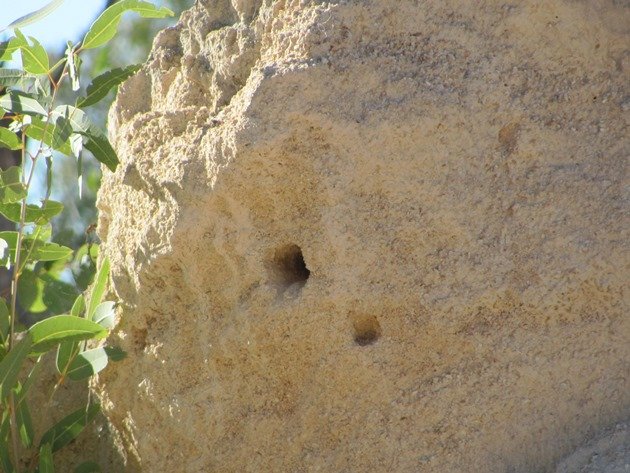
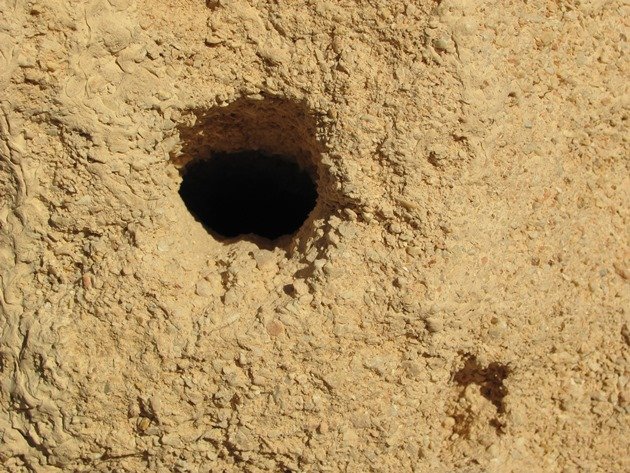
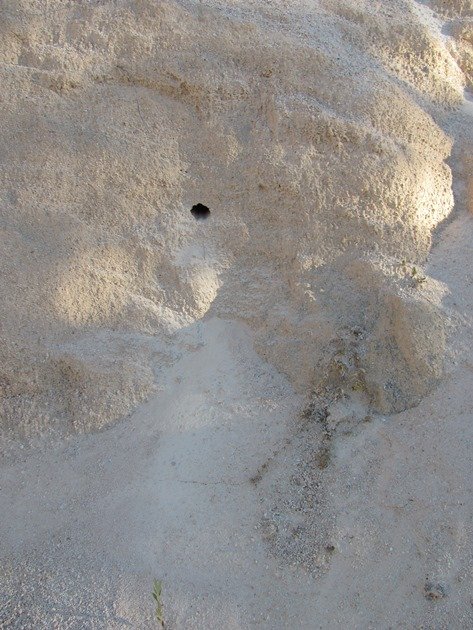
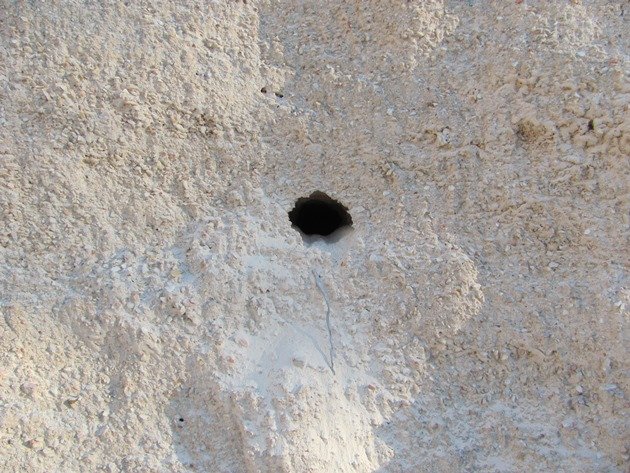
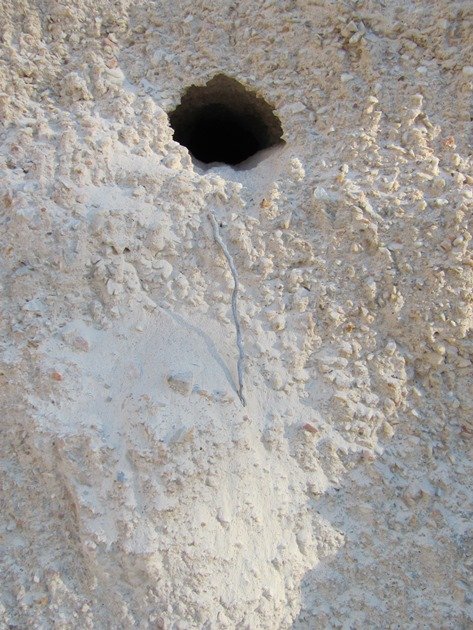
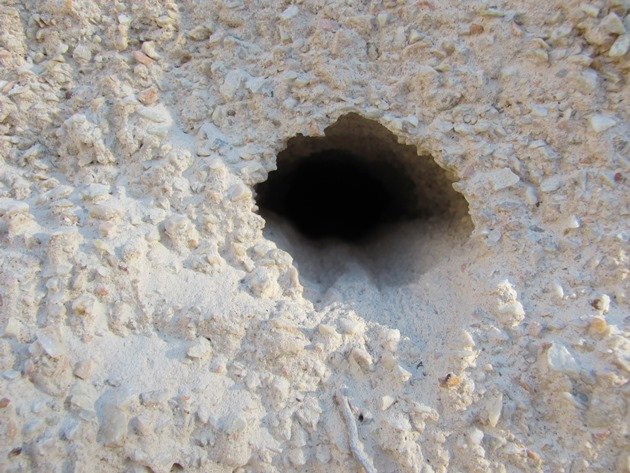
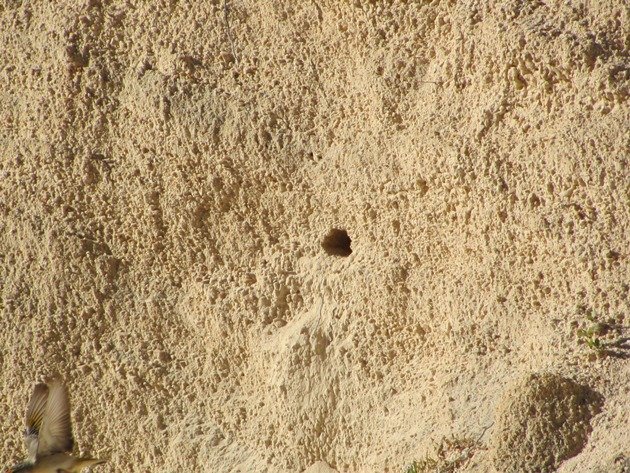
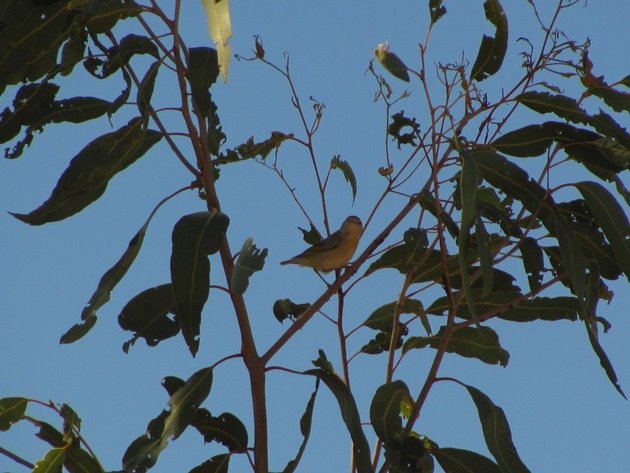
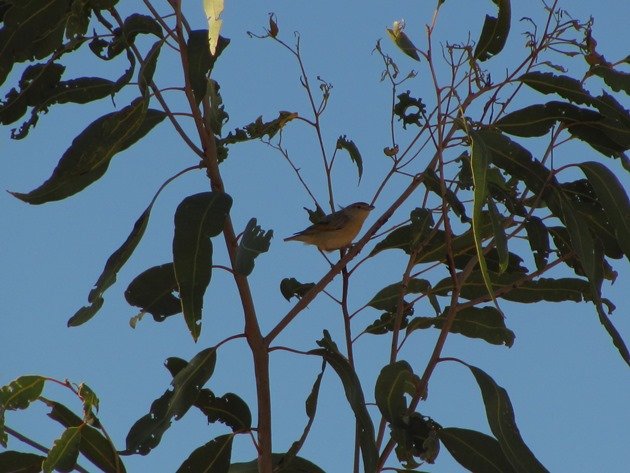
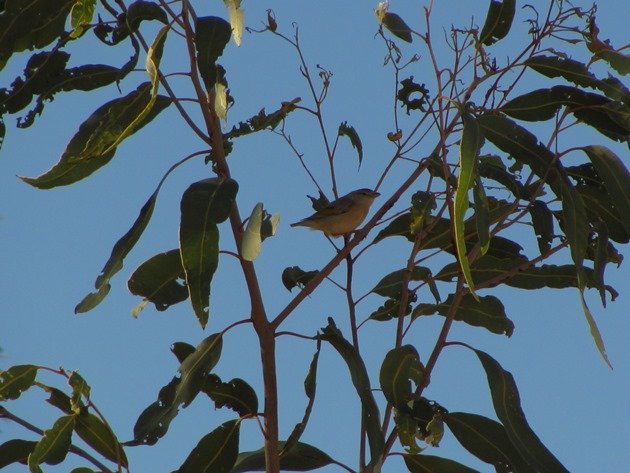
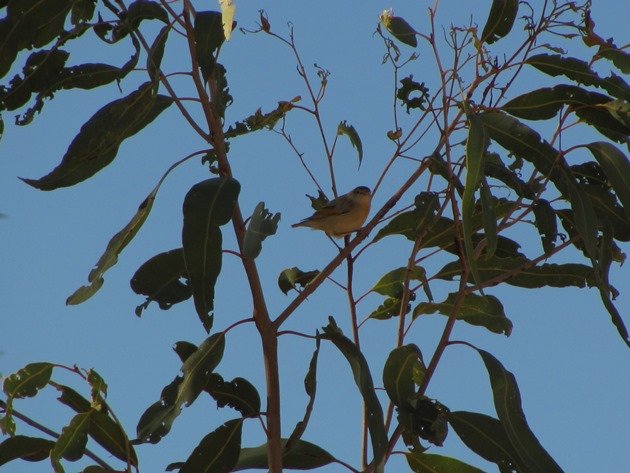










I love that stick! I wonder if the birds really did place it there? Do they need a reminder of which hole is theirs? It is amazing how many different species of birds use tunnels for nesting, and which ones dig their own and which ones take advantage of natural tunnels. Never heard of Pardalotes before; cute little clever birds.
I have heard they may put the stick there so other birds know the hole is occupied, but I don’t know for sure.